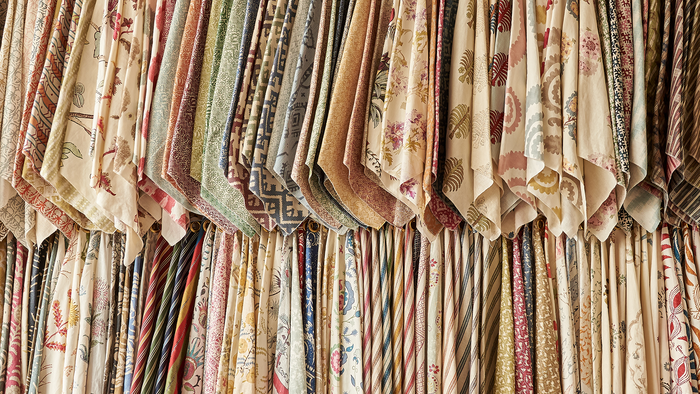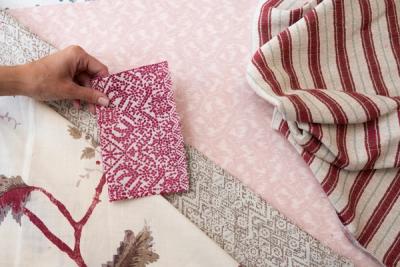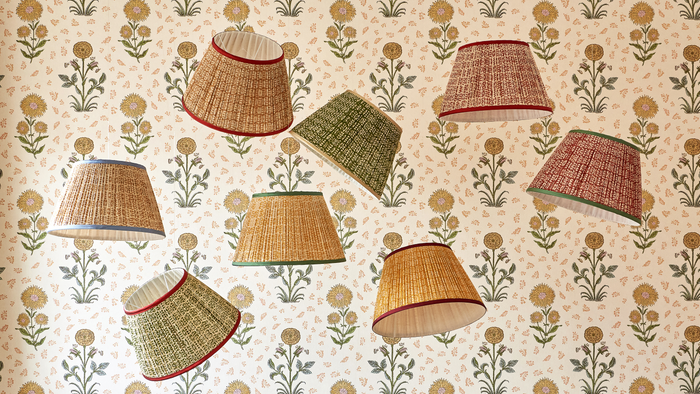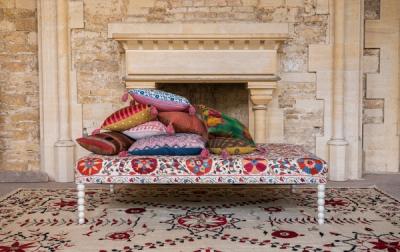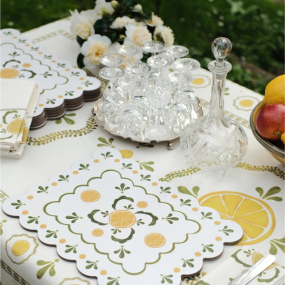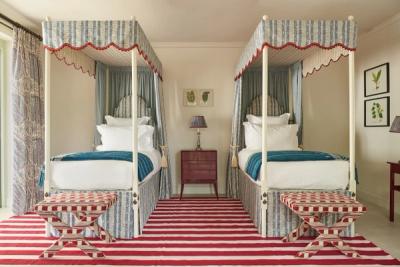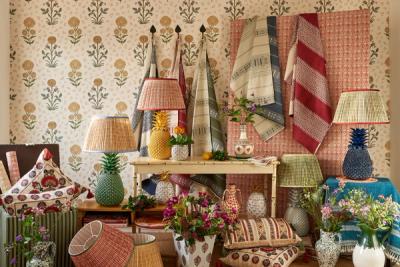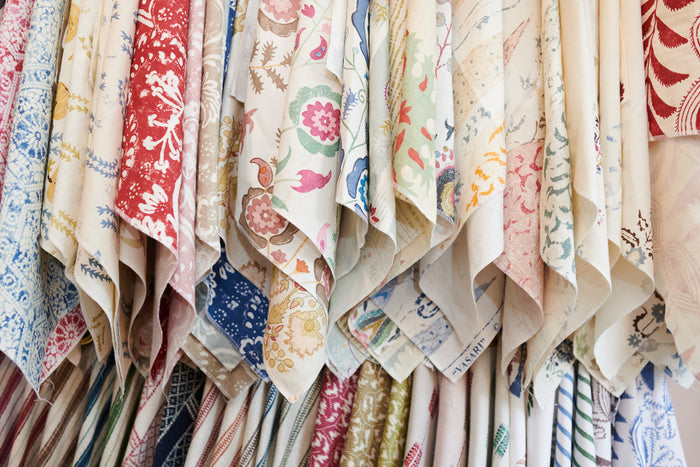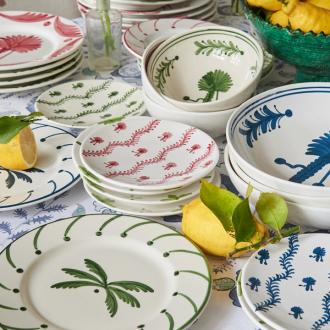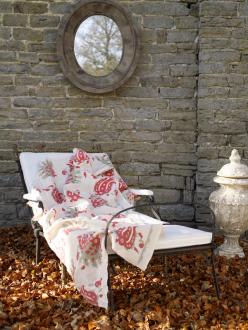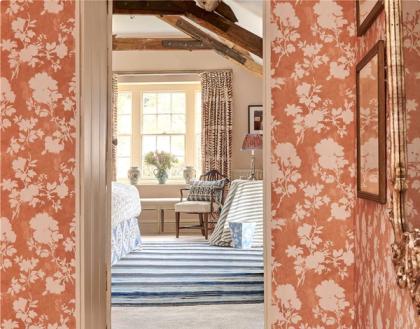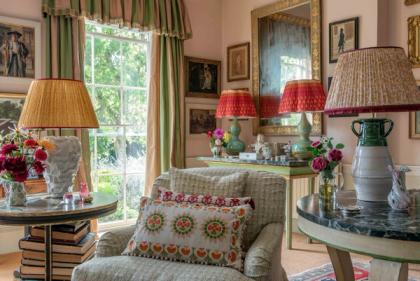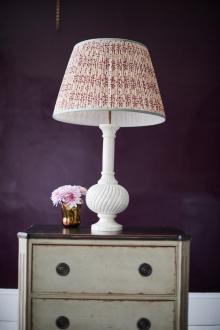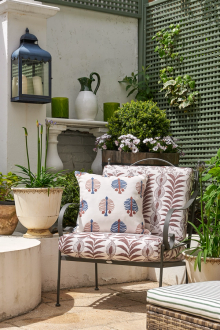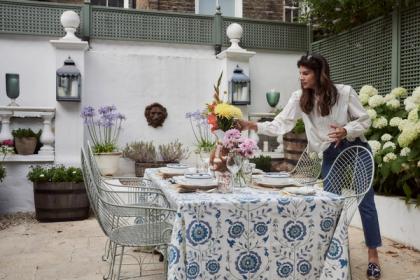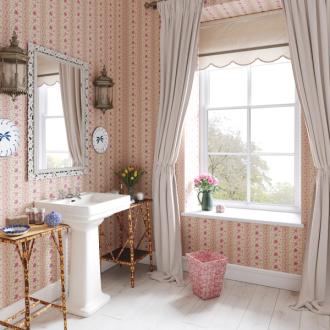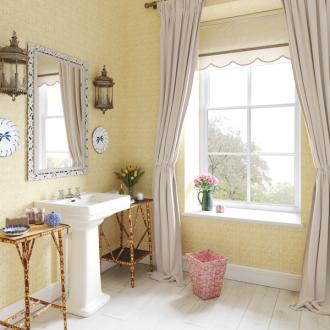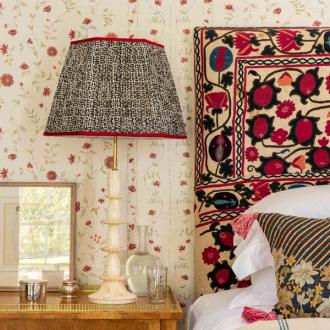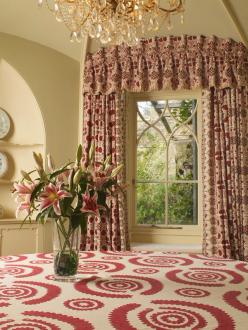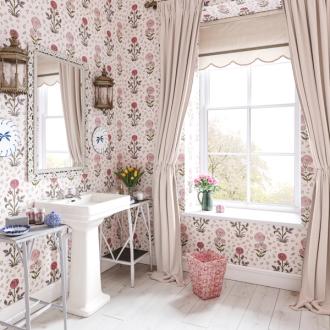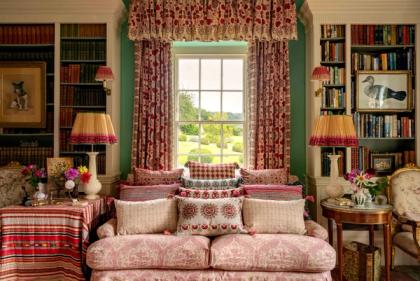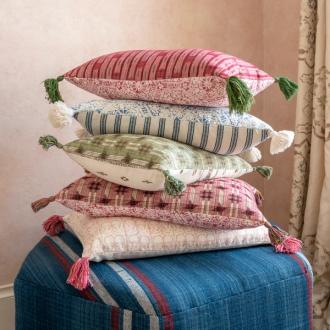The Penny Morrison Guide to Fabric Terminology
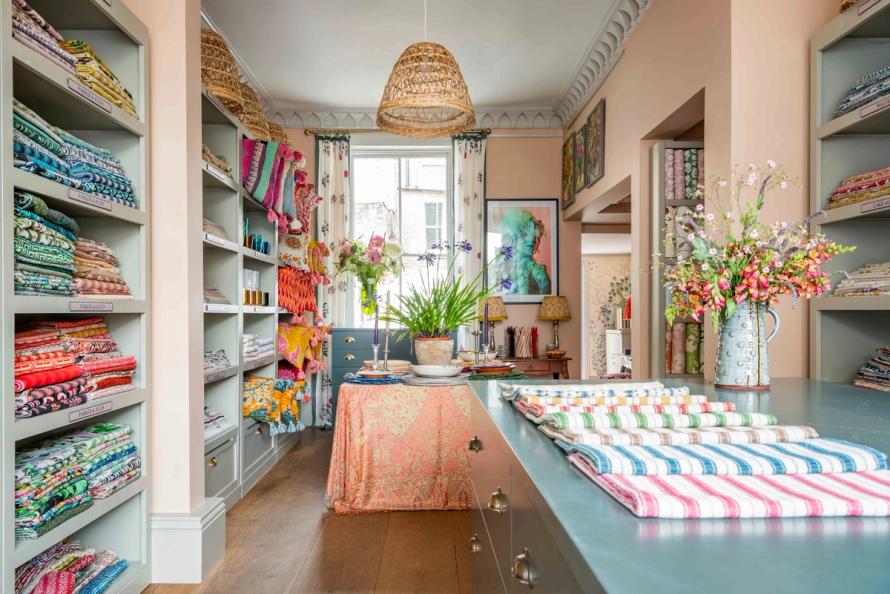

Embrace all things textile-related with our glossary to all the terms you’ll find us using across the Penny Morrison site.
Colourfast
Some fabric dyes are prone to fading, whether through regular wear, repeated washes, or exposure to sunlight, or running together and spoiling the original pattern. Colourfast fabrics are resistant to washing, rubbing, and light, meaning they can be used around the home and garden with far greater confidence.
Cotton
Perhaps the most familiar fabric type out there, cotton is woven from the fibres of the soft, white bolls of the cotton plant. Being a natural textile, cotton is highly breathable and comfortable against the skin – whether as clothing, bedding, or upholstery – and, depending on the ways in which it is woven or blended with other fibres, can be incredibly lightweight, or much denser and more hardwearing
Flax
Flax is a common flowering plant that produces nutritious seeds and oils, as well as strong fibres that can be woven into linen (see below). The plant produces delicate flowers of a pale lilac-blue, similar in shape to the petunia, but is still primarily cultivated for its use in textiles.
Flax is composed of cellulose, which gives it a natural strength and durability that is particularly useful not only in the creation of clothes, but also in interior design.
Lawn Cloth
In the world of textiles, lawn cloth is a phrase used for linen and cotton fabrics with a high thread count, and a lightweight, fine, and breathable weave. Cotton lawn is commonly used for dressmaking, but linen lawn (historically called handkerchief linen) is a little crisper, and a little more durable.
Linen
Linen is one of the oldest and most versatile fabrics there are. A lightweight and durable textile woven from flax (see above) it has been valued for thousands of years, from ancient civilisations spread across Asia, Africa, and Europe to the modern worlds of fashion and interior design.
Linen’s favourable qualities include its strength and resilience – a direct result of its durable natural fibres -- as well as natural moisture resistance and breathability. Being woven from natural fibres, linen is also an excellent choice for sensitive skin, making it a popular choice for bedding and upholstery, as well as summer clothing.
You can read our full guide to linen here.
Martindale (Test)
Fabrics designed to withstand significant wear are often accompanied by a ‘Rub Count’, which is determined through a Martindale Test. The Martindale Test sees the fabric rubbed repeatedly with an abrasive surface, like sandpaper. The fabric is monitored throughout the test, and the number of rubs counted, until it starts to show signs of wear.
This is how the rub count is determined. A fabric that starts to show signs of wear before 10,000 rubs are completed is considered a low durability, decorative fabric, while fabrics with higher rub counts – and, in particular, rub counts over 30,000 – offer much greater durability.
Performance Fabric
Fabrics that have been designed to withstand heavy use are commonly referred to as performance fabrics. This can include fabrics used to upholster outdoor furniture, fabrics intended for use in public spaces where daily wear and tear will be high, or fabrics purposefully woven to last in high traffic areas of the home.
The children’s playroom, parts of the home where the pets tend to gather together (or where muddy paws frequently pass through), or indoor/outdoor spaces like the summer house all benefit from performance fabrics.
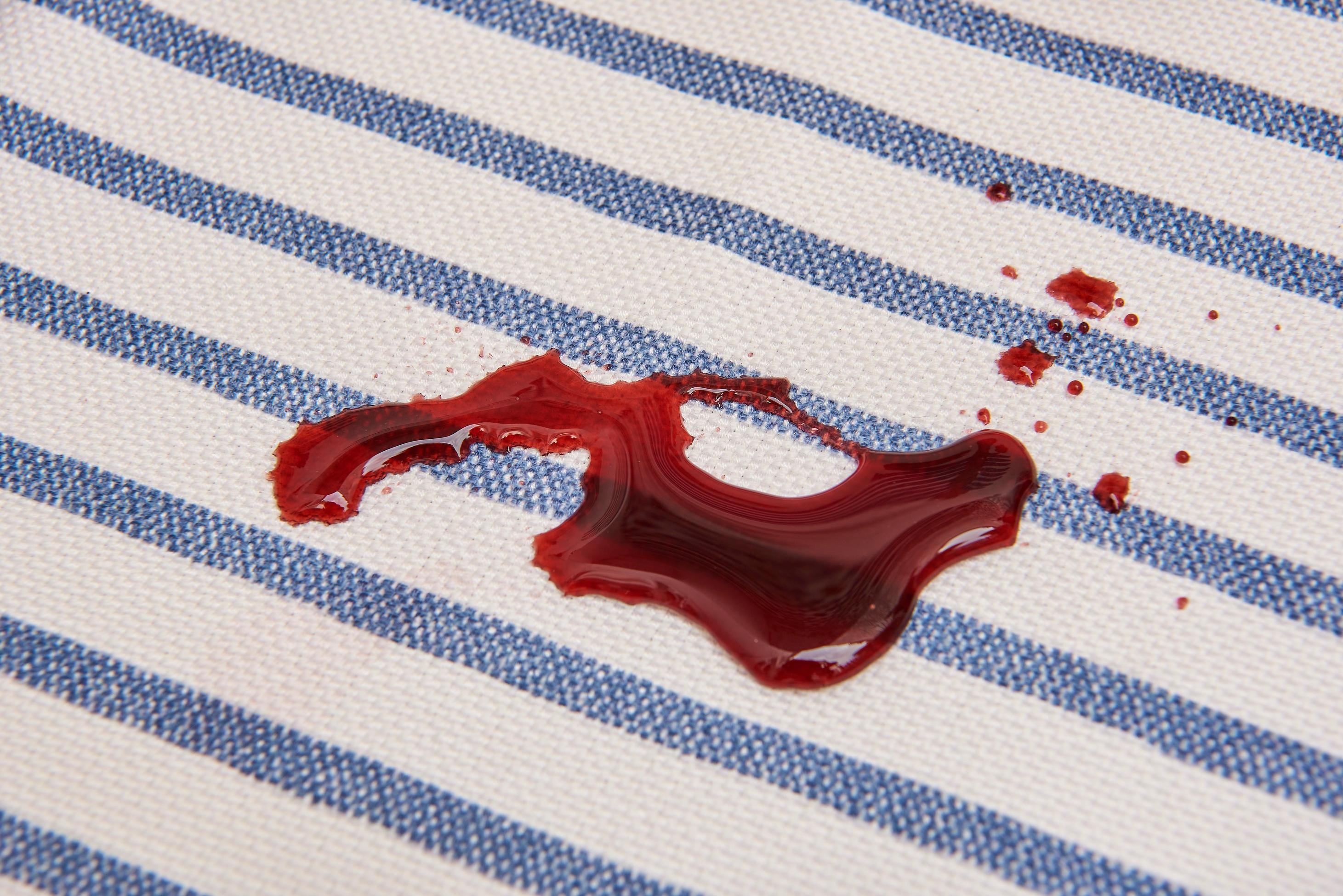
Repeat
When a fabric description feature’s a ‘Repeat’, this lets you know how wide a single repeat of the pattern is before it starts again. A pattern with a repeat of, say, 5cm will be quite small, while a much broader pattern could be anywhere from around 10cm+.
Rub Count
See ‘Martindale’ above.
Ticking
Ticking is a fabric you will no doubt recognise, even if you are not familiar with the name. The British seaside and summertime garden were once abundant in ticking fabric but, nowadays, it has found a home in interior design.
Ticking is almost always made from cotton or linen and is characterised by a particularly tight weave that was originally designed to keep feathers, hair, or straw within pillowcases or furniture. As a result of this tight weave, ticking boasts a high rub count and a high level of durability.
It is also recognisable for its stripes, which tend to be arranged in a sequence of thin ‘pin stripes’ sandwiched between broader stripes, for a distinctive (and timeless) look.
Trevira CS
Trevira CS is a very durable and high-quality performance fabric (see above) that we chose to use across our collection of performance fabrics. Not only is it a more environmentally friendly option than a long list of other performance fabrics, but it offers a stylish and comfortable option for parts of the home and garden that see a lot of use.
Upholstery
Upholstery is a broad term, used to cover all aspects of creating furniture, aside from the hard frame underneath. From the padding or springs to the fabric or leather coverings, upholstering is a broad subject – and the term upholstery applies to many different materials.
Upholstery fabrics need to be strong and hardwearing, but also breathable and comfortable against the skin. This is why linen and cotton have proven themselves to be such timelessly popular choices for upholstering furniture and creating soft but strong pieces designed to last many years in the home.
You can browse our fabrics here for more inspiration.
Viscose
Viscose is a synthetic textile. When used within a cotton blend, it offers a number of benefits for creating soft, plush, fabrics that drape beautifully over the body, or around the home in curtains or valences.
Weave
Our weaves are blends of cotton (64%), viscose (27%), and flax (9%). The effect created by weaving these three unique fibres together is a textile that is more durable than pure cotton or linen, but still soft and incredibly attractive when left to drape itself over a form or piece of furniture. It’s a great alternative when you need something stronger, but still luxurious to the touch.
